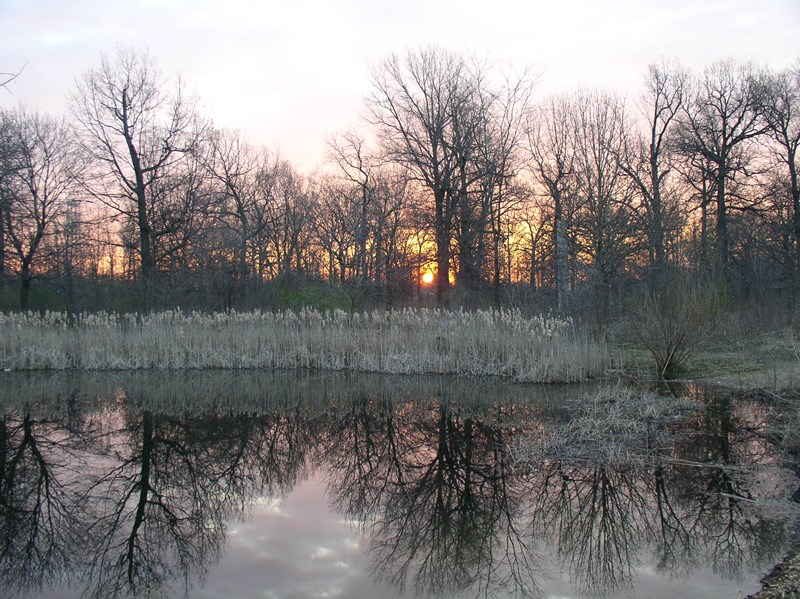
c. 1847
 The original home of early Niles Township settlers Nicholas and Elizabeth Meyer is constructed near the corner of modern day Gross Point Road and Lincoln Avenue. It is believed to be the first log cabin built in Skokie.
The original home of early Niles Township settlers Nicholas and Elizabeth Meyer is constructed near the corner of modern day Gross Point Road and Lincoln Avenue. It is believed to be the first log cabin built in Skokie.
1887
The fire engine house at 8031 Floral Avenue is constructed to house the town’s volunteer fire company. It is used as a working fire house until 1969. It also serves as the Village Hall and jail, a public school, a dance hall, and public meeting space.
1888
On May 18, the Village of Niles Centre is officially recognized by the State of Illinois. (The spelling is later changed to “Center.”)
1928
The Skokie Park District, as it is known today, is officially organized as the “Niles Center Park District” on February 3, 1928 at the Village Hall and engine house, by the electorate of the Village of Niles Center and is established by the authority of the state statutes of Illinois.  The total population of Niles Center is approximately 5,000. Five board of park commissioners are elected to fulfill the duties of policy makers. They are Emil E. Blameuser, John Kalmes, Leo Heintz, A. C. Galitz and W. R. Nelson.
The total population of Niles Center is approximately 5,000. Five board of park commissioners are elected to fulfill the duties of policy makers. They are Emil E. Blameuser, John Kalmes, Leo Heintz, A. C. Galitz and W. R. Nelson.
1929
 The board begins an aggressive land acquisition policy. On October 29 (Black Tuesday, the day that Wall Street crashed) the park district purchases approximately 62 acres of land from the Cook County Forest Preserve District for $62,000. The piece of land, now known as Oakton Park and Emily Oaks Nature Center, is bounded by Oakton, Brummel, Kenton and a right-of-way for the North Shore Railroad. This land also includes the property now owned by Oakton Community College. The district also acquires a 5.3 acre parcel in the northern section of the community, which becomes known as Sharp Corner Park, now Terminal Park.
The board begins an aggressive land acquisition policy. On October 29 (Black Tuesday, the day that Wall Street crashed) the park district purchases approximately 62 acres of land from the Cook County Forest Preserve District for $62,000. The piece of land, now known as Oakton Park and Emily Oaks Nature Center, is bounded by Oakton, Brummel, Kenton and a right-of-way for the North Shore Railroad. This land also includes the property now owned by Oakton Community College. The district also acquires a 5.3 acre parcel in the northern section of the community, which becomes known as Sharp Corner Park, now Terminal Park.
1931
On November 29, the Niles Center Park District purchases 10 acres of nursery land, which later becomes Central Park.
1937
On September 1, the park district sells 21 acres of its original property for $60,000 to Niles Township High School District 219 for the purpose of constructing Niles Township (later Niles East) High School.
1938
The park district receives a $138,373 grant from the federal Works Progress Administration (WPA).
1939
The district purchases land for what would become Lorel and Lee Wright parks, with funds from the 1937 high school property sale.
1940
On November 15, the citizens of Niles Center change the name of the village to “Skokie.” The park district follows suit with a name change, becoming the “Skokie Park District.” At this time, the park district holds 63.7 acres of open land.
1941
The Skokie Art Guild is formed and holds its first art fair.
1945
On November 20, the Village of Skokie board passes an ordinance creating the “Playground and Recreation Board,” to provide recreational opportunities for its citizens. Programs are initially operated by volunteers.
1946
The board attempts to acquire additional park sites, in order to meet Skokie’s anticipated further population growth upon the completion of the Edens Expressway. A referendum is defeated and the district’s growth, development and land acquisition stand still for the next decade.
1950
The Skokie Park District purchases a 0.2 acre site in an alley at Crain and Hamlin, later named Playtime Park.
1951
The Edens Expressway is completed, beginning a Skokie population explosion from Chicago and areas to the near north and south.
 The district purchases a 1.3 acre site at Hull and Terminal Avenues, later named Tecumseh Park.
The district purchases a 1.3 acre site at Hull and Terminal Avenues, later named Tecumseh Park.
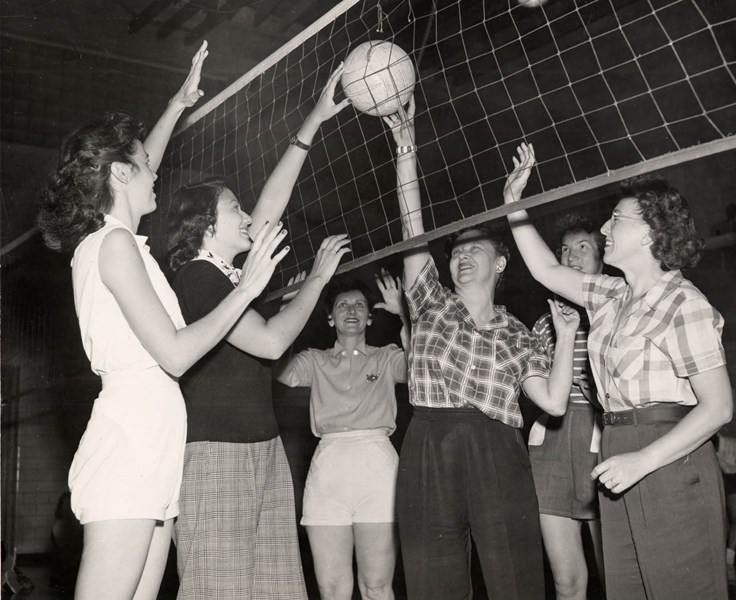 Skokie voters pass a referendum enabling the Skokie Park District to levy a tax for the purpose of offering recreational programming. The Village of Skokie then transfers recreation programming to the park district, establishing the model of combined recreation and park administration that stands today.
Skokie voters pass a referendum enabling the Skokie Park District to levy a tax for the purpose of offering recreational programming. The Village of Skokie then transfers recreation programming to the park district, establishing the model of combined recreation and park administration that stands today.
1953
The Skokie Indians semi-pro baseball team defeats Berwyn Olympic Savings for the Midwest Semipro Baseball league championship at Oakton Park.
The Skokie Park District opens Lorel Park.
1955
Skokie residents express a need for new parks and facilities in their park district, voting 2-1 in favor of a $1.75 million referendum, allowing the district to purchase and develop seventeen additional park sites and to eventually construct the Devonshire Community Center with its twin adjacent swimming pools, and a Park Services maintenance center on Skokie Boulevard.
 The following park sites are also purchased and developed: Chippewa, Devonshire, Frontage (now Peccia Park), Gross Point, Laramie, Lockwood, McNally, Menominee, Mulford, Navajo, Pawnee, Seneca, Sequoya, Shabonee, Shawnee, Timber Ridge, and Winnebago.
The following park sites are also purchased and developed: Chippewa, Devonshire, Frontage (now Peccia Park), Gross Point, Laramie, Lockwood, McNally, Menominee, Mulford, Navajo, Pawnee, Seneca, Sequoya, Shabonee, Shawnee, Timber Ridge, and Winnebago.
1957
The Devonshire Park Community Center is completed.
1960
Skokie’s population grows to more than 59,000 (from 14,000 in 1950) and the need for a second swimming facility is evident. The board sells $464,000 in bonds to construct Oakton Pool and Neighborhood Community Center.
1962
As a result of progressive financial planning by the district, enough interest is earned on 1955 and 1960 bonds to fund construction of the Laramie Neighborhood Community Center in Laramie Park.
1964
A long-range master plan for the district, entitled “Into the Future — A Park and Recreation Plan” is adopted, recognizing existing facilities, projected population trends and land use patterns, at the same time establishing objectives, planning standards and proposing future developments. The plan is the foundation for the 1964 $2 million bond issue that sees the acquisition and development of ten new parks and several new facilities.
 A $6 million grant from the Federal Department of Housing and Urban Development also assists the district in this stage of development. Parks added are Kostner (now Lyon), Lauth, Gleiss, Weber, Emerson, Coyle (now Schack), Main and Niles Center (Skokie Park Tennis Center), Weissburg, Carol, and Main/Hamlin. In addition to these parks, the district obtains new property for leisure activities, including Little League and Hamlin Parks, leased from the Metropolitan Sanitary District of Greater Chicago (now MWRDGC).
A $6 million grant from the Federal Department of Housing and Urban Development also assists the district in this stage of development. Parks added are Kostner (now Lyon), Lauth, Gleiss, Weber, Emerson, Coyle (now Schack), Main and Niles Center (Skokie Park Tennis Center), Weissburg, Carol, and Main/Hamlin. In addition to these parks, the district obtains new property for leisure activities, including Little League and Hamlin Parks, leased from the Metropolitan Sanitary District of Greater Chicago (now MWRDGC).
1972
The district sells $1 million in revenue bonds to finance the Skatium Ice Arena. At the same time, a 9-hole, par 3 golf course, on the drawing board since 1964, is slated for construction on the site of the former village dump at Church and Gross Point Road.
The Maine-Niles Association of Special Recreation (MNASR) is formed by the Skokie Park District, Morton Grove Park District, Niles Park District, Des Plaines Park District, the Park Ridge Park District, the Lincolnwood Recreation Board and Golf Maine Park District. Its purpose is to provide recreational opportunities for individuals with disabilities.
1973
Weber Park Golf Course opens for play in June and the Skatium Ice Arena opens its doors in October, bringing new recreational opportunities to the residents of Skokie.
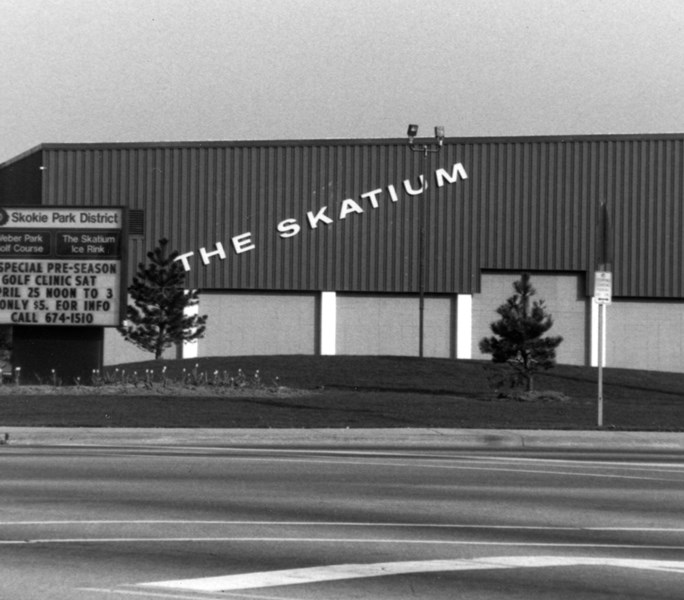 1974
1974
Skokie’s first lighted ball field is installed at Laramie Park.
After discovering the 1847 Meyer log cabin under metal siding and chicken wire, the property’s owner deeds the building to the Village of Skokie.
1975
The Skokie Park Tennis Center is opened with lighted courts.
1979
The Skokie Park District is recognized by the National Parks and Recreation Association (NRPA) as a Gold Medal Finalist for excellence in Park and Recreation Management.
1981
The Laramie Neighborhood Center is converted into a day-care facility. The Tot Learning Center (TLC) begins providing quality daycare at an affordable price, to the residents of the community. The center serves 41 children (between two & five years of age) daily.
1982
With an eye on possible expansion, the district purchases six acres adjacent to the Skatium Ice Arena in Weber Park for $625,000. (See 1995.)
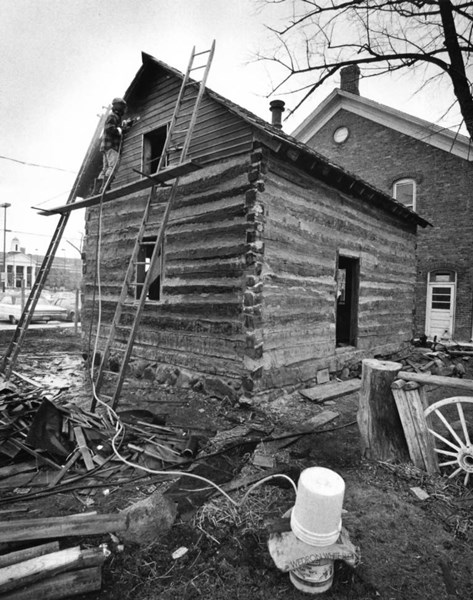 The Village moves the Meyer log cabin to a site behind the historic engine house. It is restored using mid-1800s materials and tools.
The Village moves the Meyer log cabin to a site behind the historic engine house. It is restored using mid-1800s materials and tools.
1986
Concerns for the environment prompt the district to plan the Emily Oaks Nature Center, with an $80,000 grant from the State of Illinois Department of Conservation.
1988
A multi-purpose facility (Emily Oaks Nature Center) is built at Emily Park. The site, including the existing pond, is restored and earth education programming is developed.
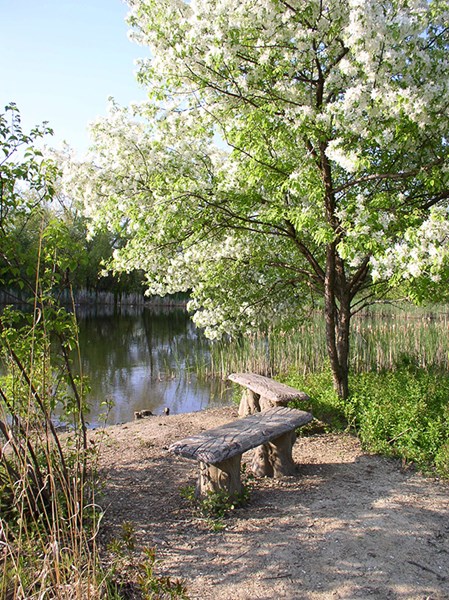 The board sells a $2.5 million dollar general obligation bond to finance the doubling in size of the Oakton Neighborhood Center, later referred to as the Oakton Community Center. The Oakton Pool is renovated into a family water park and renamed the “Skokie Water Playground.”
The board sells a $2.5 million dollar general obligation bond to finance the doubling in size of the Oakton Neighborhood Center, later referred to as the Oakton Community Center. The Oakton Pool is renovated into a family water park and renamed the “Skokie Water Playground.”
1989
Over the next decade, the Village of Skokie installs underground storm water retention vaults at Central, Devonshire, Gross Point, Gross Point & Terminal, Lawler, Lockwood, Navajo, Seneca, Sequoya and Shawnee Parks, in order to alleviate flooding in Skokie neighborhoods. As the district renovates the Weber Park Golf Course, significant design considerations are also implemented to retain storm water on the course and reduce flooding in adjacent neighborhoods.
1990
A needs assessment study and the district’s resulting five-year comprehensive plan put the Skokie Park District on a course to rebuild the district into one of the nation’s top park districts (see 1997), financed through the sale of $45 million in long-term general obligation and refunding alternate revenue bonds. From 1991-95, nearly every active park in the district is renovated.
The Village of Skokie sells the 1887 fire engine house and Meyer log cabin to the park district for $1.
1991
On the weekend of June 15-16, the district — with the help of several other community agencies and groups — organizes the first “Skokie Festival of Cultures,” held at Oakton Park. The festival becomes one of the premier ethnic festivals in Illinois, attracting more than a half million attendees over the next 25 years, with dozens of cultures, all representing Skokie’s tremendous diversity. 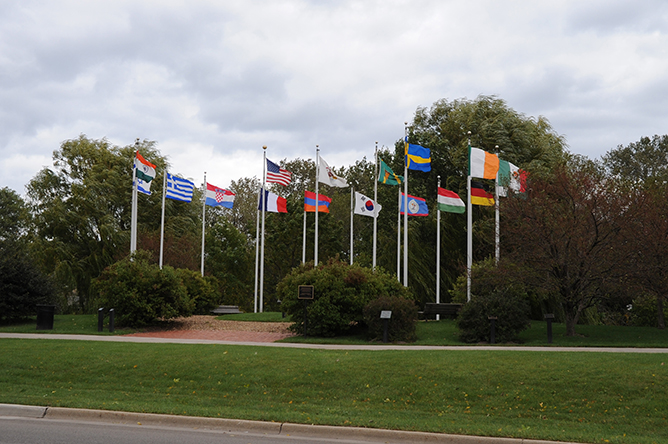 Attendees take their free ‘Tour of the World,’ enjoying two days of ethnic folk music and dance, a wide range of food, unique arts and crafts, animal rides, beer tasting, a merchandise bazaar, and dozens of cultural booths and displays.
Attendees take their free ‘Tour of the World,’ enjoying two days of ethnic folk music and dance, a wide range of food, unique arts and crafts, animal rides, beer tasting, a merchandise bazaar, and dozens of cultural booths and displays.
Through an agreement with Elementary School District 69, the district uses 6.5 acres, at Madison School, primarily for soccer programming. A three-way intergovernmental agreement with the Village of Skokie and High School District 219 results in the park district receiving a $170,000 contribution for the redevelopment of Lawler Park.
As part of the momentum created by the district’s planned park redevelopment program, the district holds public hearings and neighborhood forums specifically targeted to the redevelopment of its three indoor community centers and two outdoor pools. The district begins to look for a site to accommodate the expanding indoor recreation needs of the community. (See 1995.)
1992
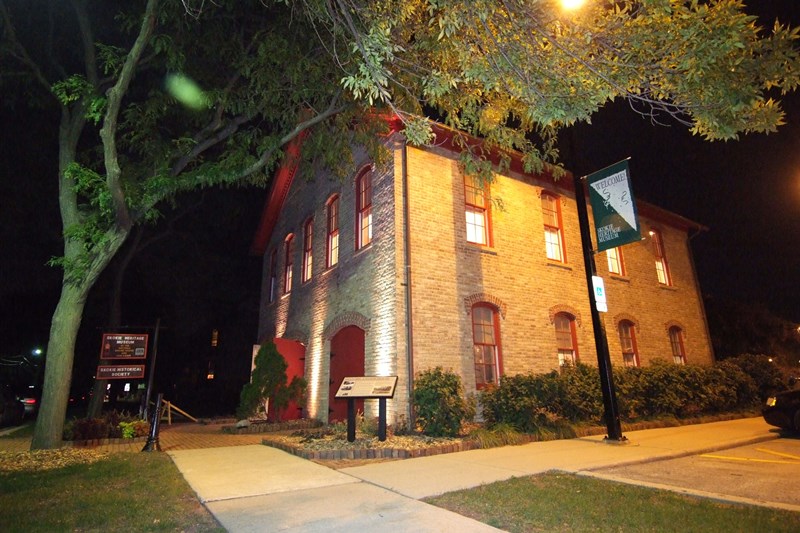 The historic fire engine house is restored to its 1912 state at a cost of $450,000. The district renames the building (and the adjacent Meyer log cabin) the Skokie Heritage Museum, where it begins historic program offerings for the community.
The historic fire engine house is restored to its 1912 state at a cost of $450,000. The district renames the building (and the adjacent Meyer log cabin) the Skokie Heritage Museum, where it begins historic program offerings for the community.
1993
The park district enters into a long-term land lease agreement with Commonwealth Edison, allowing the district to expand its maintenance (park services division) operation.
1993
The MWRDGC awards a 38-year lease for two parcels of property totaling 50 acres to the district, including 15 acres along the North Shore Channel and 35 acres at Oakton and McCormick.
1995
The Weber Leisure Center opens at Weber Park, with a connecting hallway to the adjacent Skatium Ice Arena. 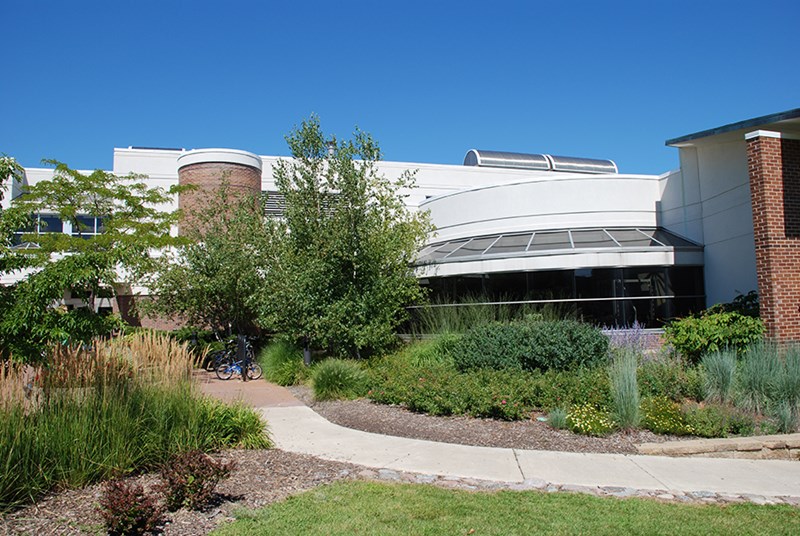 The facility houses a gymnasium, the “Fitness First!” health club, a running track, numerous multi-purpose programming rooms and the new administrative headquarters of the district.
The facility houses a gymnasium, the “Fitness First!” health club, a running track, numerous multi-purpose programming rooms and the new administrative headquarters of the district.
The new Devonshire Aquatic Center opens. The facility replaces the original pool built in 1963. Devonshire Park is also redeveloped with a new boardwalk and gazebo, and a new playground over a former pond location.
Shelters at Central, Gross Point, Hamlin, Lyon, Schack and Terminal Parks are replaced.
The district’s July 4 celebration moves from its longtime home at Oakton Park to Niles West High School. There, more than 10,000 residents annually gather for an evening 3-D Fireworks Festival, complete with games, food, two live bands and free 3-D glasses. The event follows the Fourth of July parade in downtown Skokie.
The Skokie Park District is recognized by the NRPA as a finalist for its Gold Medal Award.
1996
The district purchases seven acres on Howard Street for $2 million, in order to build a new Tot Learning Center.
The kindergarten Space Program, a joint daycare program of the Skokie Park District and Elementary School District 69, is initiated at Madison School. The program expands over the years to include grades K-5 at ten Skokie elementary schools.
The 1957 Devonshire Park Community Center is expanded and renovated, becoming the Devonshire Cultural Center, featuring music, art, dance and theater programming, as well as housing a licensed preschool (completed in 1998).
Oakton Park and the Skokie Water Playground redevelopment, with the assistance of a $200,000 DOC grant, are completed in phases, 1996-2000.
The Skokie Park District is recognized by the NRPA as a finalist for its Gold Medal Award.
The district’s first website hits the world wide web.
1997
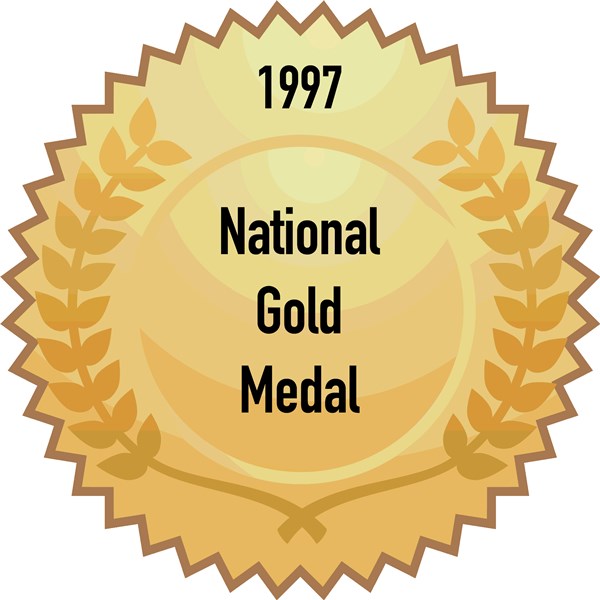 The Skokie Park District wins the National Gold Medal award for excellence in Park and Recreation Management from the NRPA. The district also receives Distinguished Park and Recreation Agency certification from the Illinois Park & Recreation Association and the Illinois Association of Park Districts.
The Skokie Park District wins the National Gold Medal award for excellence in Park and Recreation Management from the NRPA. The district also receives Distinguished Park and Recreation Agency certification from the Illinois Park & Recreation Association and the Illinois Association of Park Districts.
The 1,800-square foot Emily Oaks Nature Center visitor facility is expanded to more than 10,000 square feet, adding classrooms and offices, and a program/rental room, kitchen, greenhouse and garage.
1998
The district opens Skokie Sports Park on roughly one half of an MWRDGC site at Oakton and McCormick Blvd. 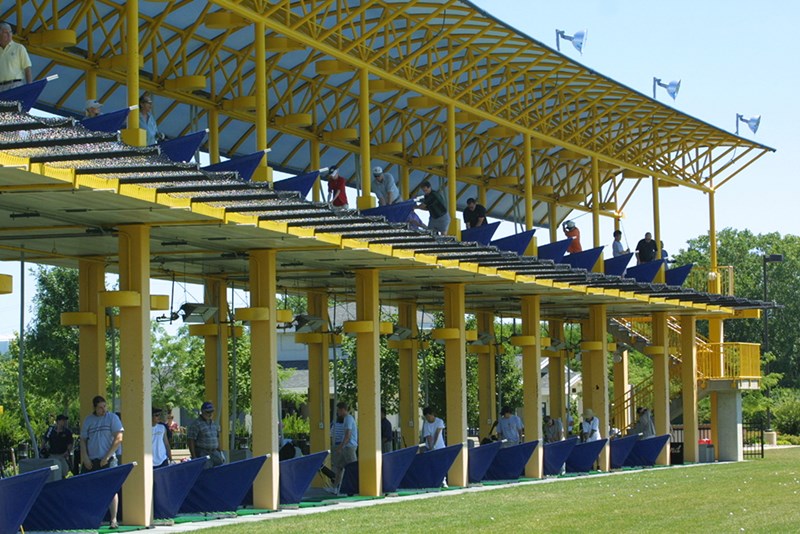 This $4.5 million park development offers a two-tiered automatic tee--up driving range, two miniature golf courses, a seven-station batting cage facility, a small clubhouse and a maintenance facility.
This $4.5 million park development offers a two-tiered automatic tee--up driving range, two miniature golf courses, a seven-station batting cage facility, a small clubhouse and a maintenance facility.
Tot Learning Center is moved to its new home on Howard Street. (The old TLC at Laramie Park is demolished in 1999.)
Oakton Community Center is renovated. The new center features “The Exploritorium,” an indoor children’s imagination play area.
The district welcomes the former Oakton Community College senior acting troupe, ‘Still Acting Up’ to its already healthy roster of senior programs. The group writes and performs a new, original musical stage production, every fall.
1999
The district acquires a grant from the Department of Natural Resources and begins work on its 15-acre, MWRD-leased, North Shore Channel site. A non-motorized launch dock is installed, as well as a shelter, a fishing station, and a 30-car parking lot.
The district purchases 1.3 acres at Oakton Street and Lorel Avenue for $1.1 million, and 0.2 acres of property at 8035 Floral Ave., for $160,000.
2000
The district completes a $1.4 million expansion of its Fitness First health club at the Weber Leisure Center.
2001
With a $317,000 grant, the district completes new facilities on the northern portion of the North Shore Channel site (Channelside Park), including a dog park and soccer fields, to be used jointly by the Evanston Recreation Department. The new “Dammrich Rowing Center” is also completed on the site, with the help of a $200,000 contribution from the Loyola Rowing Club. The facility houses an indoor practice rowing tank, work out rooms and a storage area for sculls.
2003
Emily Oaks Nature Center opens the “Woodland Wander Inn,” an interactive room creating a nature learning experience for young children.
The district’s website is upgraded, featuring an online registration system.
Chicago Magazine names the Exploritorium “Chicagoland’s best rainy day activity site.”
After embarking for more than a decade on a nearly complete rebuilding of the Skokie Park District, the agency enters into a fifteen-year period of “maintenance and recreation mode,” maintaining existing parks and facilities, and creating new and exciting recreation opportunities for Skokie residents.
Annually in May, from 2003 to 2010, the Skatium Ice Arena hosts “Superstars on Ice,” a one-night event featuring Olympians and world champions such as Scott Hamilton, Sasha Cohen, Todd Eldredge, Evan Lysacek, Johnny Weir, Kurt Browning, Yuka Sato, Kimmie Meissner and Irina Slutskaya.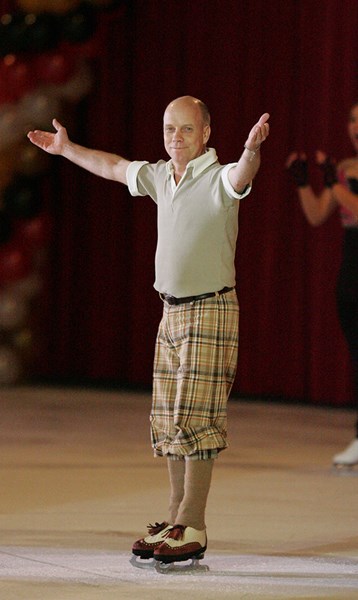
Pooch Park is opened at Channelside Park, with its grand opening event, “Woofstock,” named a top event nationally by the NRPA.
As a result of the district’s 1998 Technology Plan and its new web-based registration system, online registration at the district explodes.
The district receives a Distinguished Park and Recreation Agency re-certification from the Illinois Park & Recreation Association and the Illinois Association of Park Districts accreditation committee.
2005
The district acquires land on Lincoln Avenue, just north of downtown Skokie, on which it builds Veterans Park, a public open space recognizing the service of Skokie war veterans.
2007
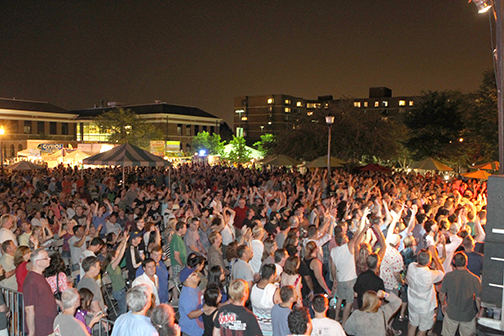 The district’s third major annual outdoor festival, “Skokie’s Backlot Bash” becomes a three-day entertainment festival in late August, featuring original live music, as well as a host of family attractions, including a 5K run, a large carnival midway, classic movies, a children’s stage and kid’s activities, a classic auto show, bingo, exhibits at the Skokie Heritage Museum, and a Sunday pancake breakfast and farmer’s market. The “Backlot Bash” is named in honor of downtown Skokie’s heritage as a backlot set for silent western movies between 1907 and 1915. The district partners with the Village of Skokie, the public library, High School District 219, the Skokie Chamber of Commerce and the Independent Merchants of Downtown Skokie, to create an event that will bolster business downtown.
The district’s third major annual outdoor festival, “Skokie’s Backlot Bash” becomes a three-day entertainment festival in late August, featuring original live music, as well as a host of family attractions, including a 5K run, a large carnival midway, classic movies, a children’s stage and kid’s activities, a classic auto show, bingo, exhibits at the Skokie Heritage Museum, and a Sunday pancake breakfast and farmer’s market. The “Backlot Bash” is named in honor of downtown Skokie’s heritage as a backlot set for silent western movies between 1907 and 1915. The district partners with the Village of Skokie, the public library, High School District 219, the Skokie Chamber of Commerce and the Independent Merchants of Downtown Skokie, to create an event that will bolster business downtown.
2008
From 2008 to 2011, playgrounds at Timber Ridge, Lockwood, Sequoya, Devonshire, Emerson and Emily Oaks Parks, are landscaped and renovated for safety, with state-of-the art play equipment installed. The district also embarks on a five-year renovation of its tennis court system, which eventually includes those at Laramie, Devonshire, Lauth, Central, and Terminal Parks, as well as the Skokie Park Tennis Center.
2009
The district receives a Distinguished Park and Recreation Agency re-certification from the Illinois Park & Recreation Association and the Illinois Association of Park Districts accreditation committee.
2010
The Oakton Park playground is renovated, including the installation of an electronic play system. The park’s old structures are refurbished and donated to an Armenia city, where children experience a playground for the first time.
Spraygrounds (concrete pads featuring dozens of water jets spontaneously spraying water) are installed at both the Devonshire Aquatic Center and at the Skokie Water Playground.
2011
The Exploritorium is renovated, including the installation of several new attractions.
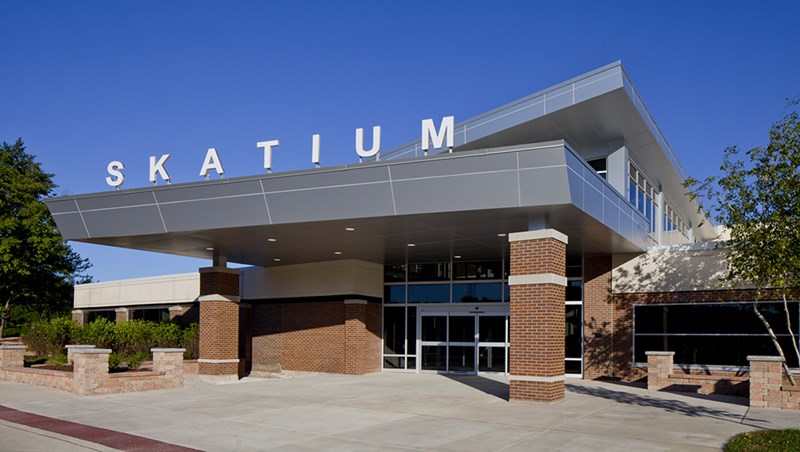 After a 2005 upgrade to its two ice rinks, the nearly 40-year-old Skatium Ice Arena undergoes a $5.7 million renovation, which includes the addition of a new façade, a new lobby, modern locker rooms, a new café, two party rooms, and a computerized energy management system.
After a 2005 upgrade to its two ice rinks, the nearly 40-year-old Skatium Ice Arena undergoes a $5.7 million renovation, which includes the addition of a new façade, a new lobby, modern locker rooms, a new café, two party rooms, and a computerized energy management system.
The 1925 Niles Center Home Laundry building in the 8100 block of Floral Avenue, the last Skokie building to bear the name “Niles Center,” is torn down. The portion of its façade with the old name chiseled in limestone is preserved as a wall, now found on park land next to the Skokie Heritage Museum.
2012
Serving as the Emily Oaks Nature Center manager since the facility’s construction in 1988, Lee Hansen wins the Illinois Park and Recreation Association’s ‘Excellence in Environmental Leadership Award.’
2013
Illinois Hockey Hall-of-Famer Steve Glickman, the district’s longtime hockey director, coaches Team USA to the master’s division hockey gold medal at the 2013 World Maccabiah Games in Israel.
The World Wiffle® Ball Championship, the nation’s oldest and largest wiffleball tournament, moves from Indiana to Skokie, where it operates from 2013-2017. The event is featured on ESPN’s SportsCenter in 2014.
2014
The district’s figure skating director, Kerry Murphy, is named the United States Figure Skating Association’s first “outstanding basic skills director in the nation,” with the organization also calling the Skokie Park District figure skating program “one of the top programs in the country.”
2016
For the fourth time since 1997, the Skokie Park District is recognized as an Illinois Distinguished Accredited Agency by the Illinois Association of Park Districts and the Illinois Park and Recreation Association.
After more than six decades of meeting Skokie’s recreational needs, the district continues to offer unique programming, including the addition of pickleball, footgolf, rugby and ‘Growing Sprouts’ nature preschool.
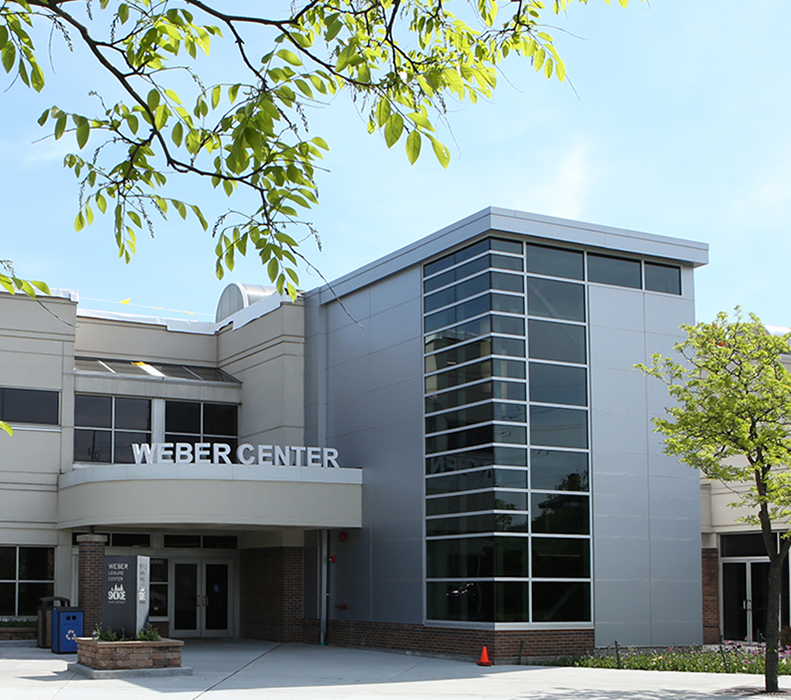 2018
2018
The Weber Leisure Center and its Fitness First health club is renovated, turning it into a more spacious, state-of-the-art recreational facility, including more programming space and a larger lobby and stairway.
The Park Services Center and the district’s Information Technology department are moved to 7500 Frontage Rd., after an extension renovation, more than than doubling the size of the original 1956 service center on Skokie Boulevard.
After the three-year Nicor Gas remediation and cleanup of the eastern half of the MWRDGC-leased property at Oakton and McCormick (2012-15), the district renovates “Sports Park East" for soccer and cricket.
2019
Three decades after bringing its residents the Skokie Festival of Cultures, the Skokie Park District continues to deliver a diverse offering of programs, including "Skokie Pride: An LGBTQ Family-Friendly Event," attended by more than 1,000 Skokie residents.
2020
The district's new website wins the Agency Showcase Award as best park district website in Illinois.
The district limits it facility use and programming throughout the year, due to the worldwide COVID-19 pandemic.
Laramie Park undergoes a $1.5 million renovation.
2021
The Skokie Park District is awarded the Illinois Park & Recreation Association’s first-ever ‘Champions for Change’ Award at the association’s state conference, recognizing the state agency with the most unique and exemplary practices of increasing access, and fostering diversity and inclusion within their community or organization.
Emily Oaks Nature Center installs 44 solar panels on its roof, converting sunlight into electricity. the center is the first of several planned solar conversions at the district.
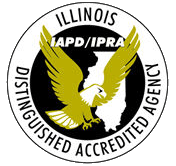 The district renovates nine playgrounds and parks throughout the district.
The district renovates nine playgrounds and parks throughout the district.
The Skokie Park District is recognized as an Illinois Distinguished Accredited Agency by the Illinois Association of Park Districts (IAPD) and the Illinois Park and Recreation Association (IPRA) for the fifth time since 1993, its accreditation running from 2021-26.
2022
The district wins first prize for its short form video entitled 'Pooch Park' at the Illinois Park & Recreation Association's 2021 Agency Showcase competition.
Board President Susan Aberman, by serving 21 years on the board of commissioners, becomes the third longest serving board member in the district's history.
Weissburg Park becomes one of only 559 accredited arboretums in the world.
TrackMan Range is installed at the Skokie Sports Park golf range.
Robin Horwitz and the Devonshire Cultural Center win the 2022 Skokie Group Artistic Excellence Award.
2023
The district wins second prize for its website at the annual Illinois Park & Recreation Association's Agency Showcase competition.
Skokie Sports Park's indoor TrackMan golf simulator, The Bunker, opens in July.
The district begins a process to honor park land that sits on the homeland of local Native American tribes, writing and presenting a Land Acknowledgment Statement. The district also plans, with the input of each individual tribe, to review its 11 existing Native American park names, and whether the names accurately and respectfully represent Tribal Nations and their cultures, traditions, and contributions to Skokie and this region.
ExceleRate Illinois, the state's quality rating and improvement system for early learning and development providers, awards the Skokie Park District's Tot Learning Center its Gold Circle of Quality.
